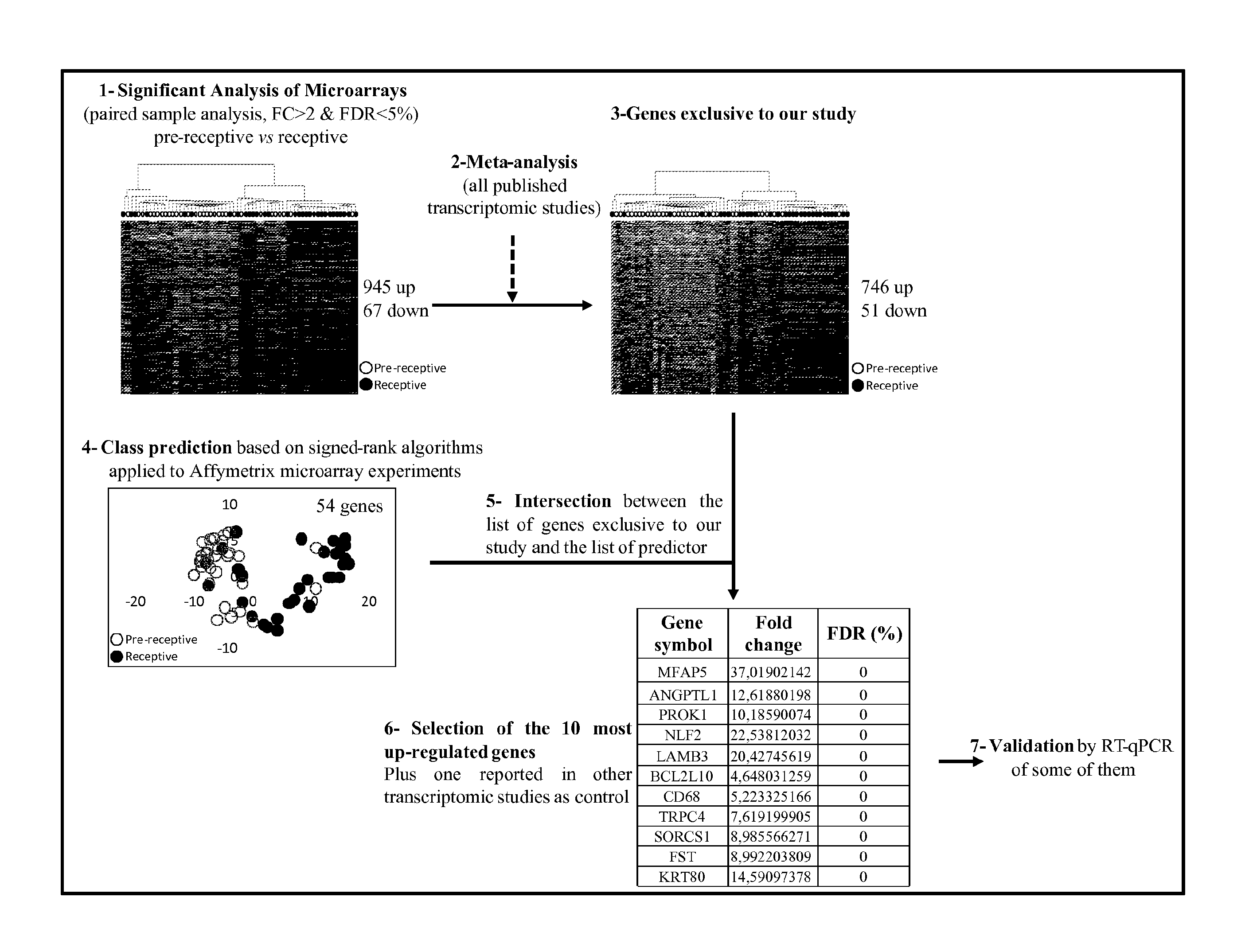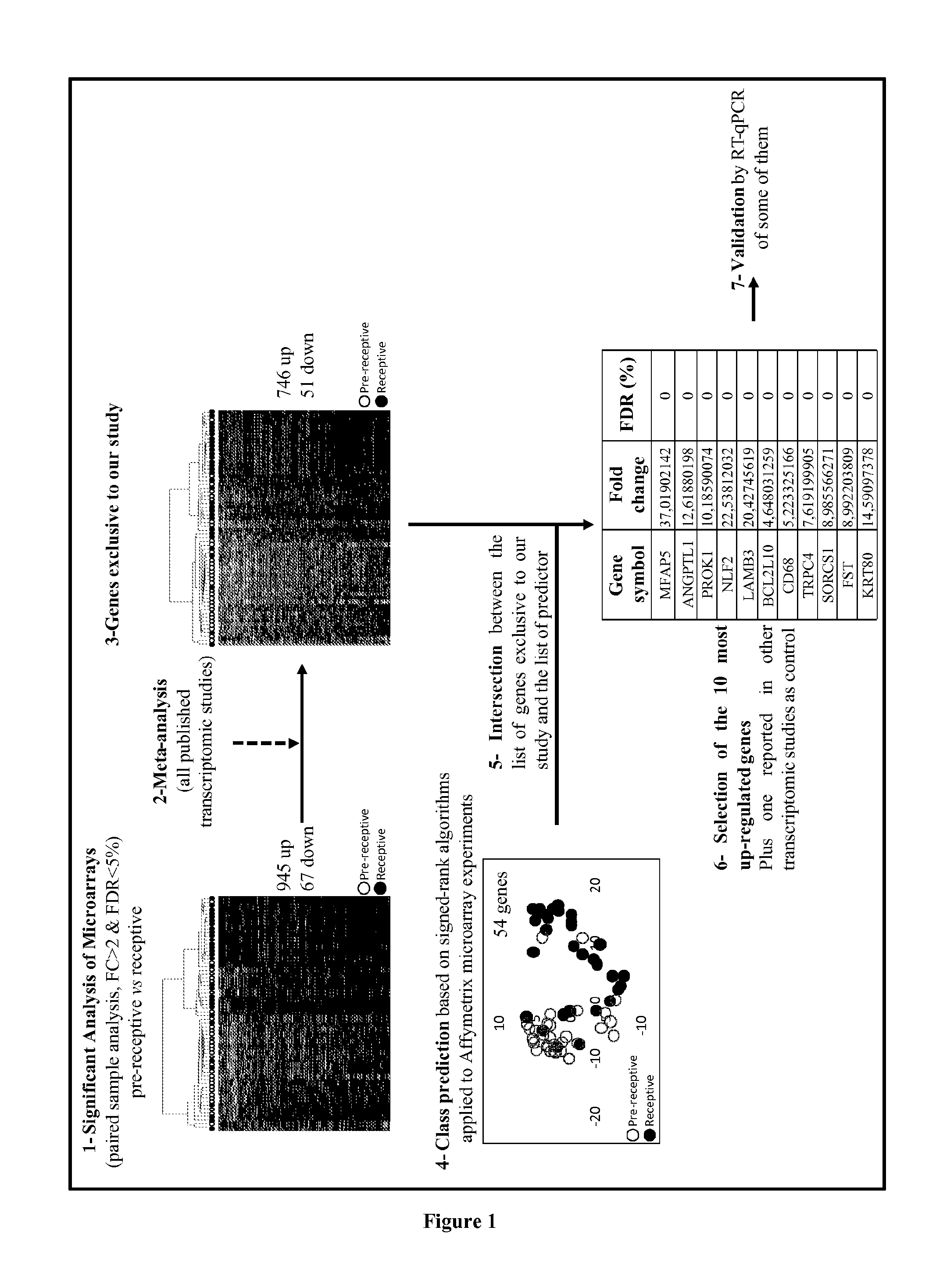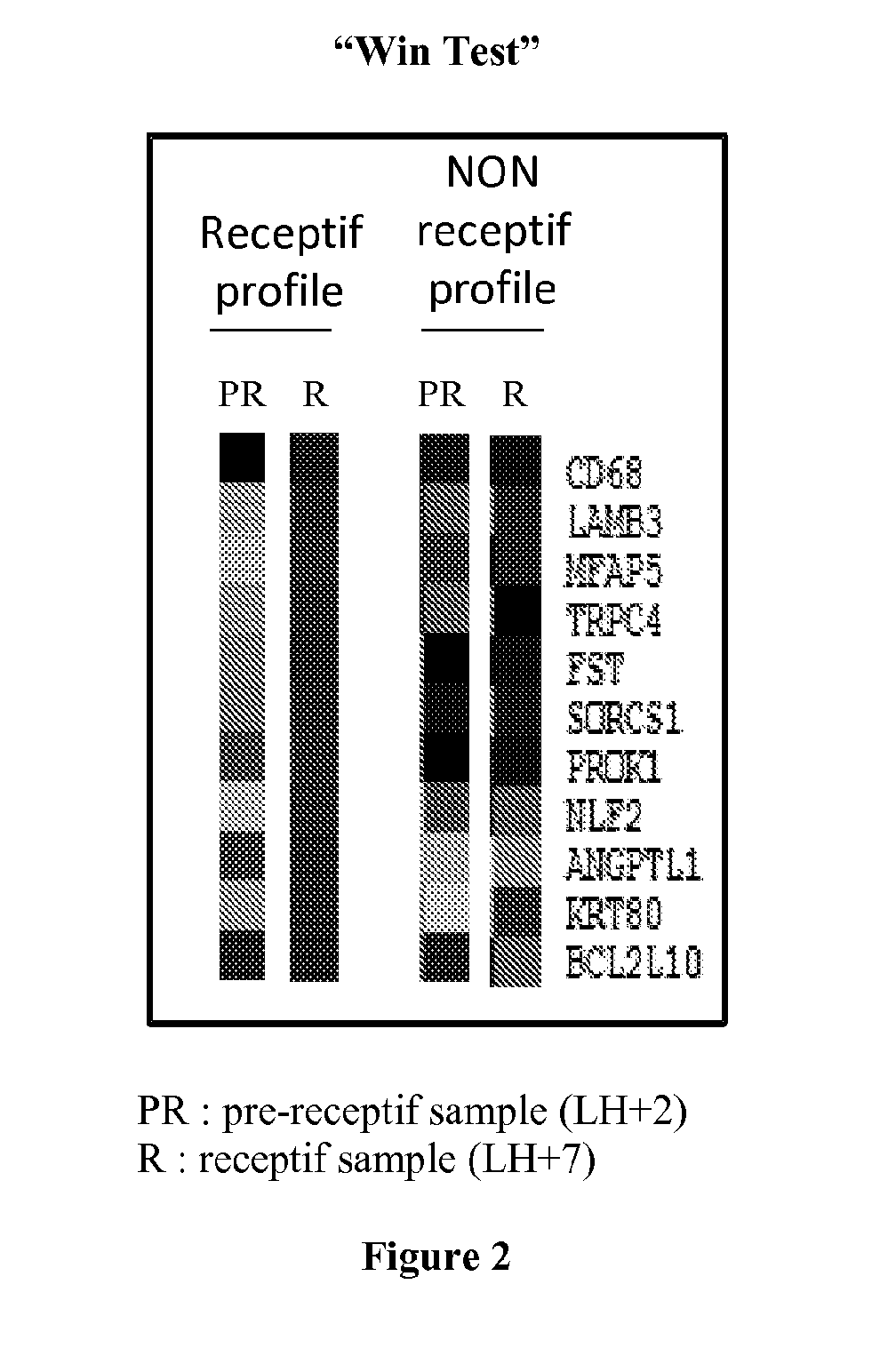Methods for assessing endometrium receptivity of a patient
a technology applied in the field of methods for assessing the receptivity of the endometrium of a patient, can solve the problems of low implantation rate, failure of implantation, and limited positive predictive valu
- Summary
- Abstract
- Description
- Claims
- Application Information
AI Technical Summary
Benefits of technology
Problems solved by technology
Method used
Image
Examples
example 1
Material & Methods
Identification of New Bio-Markers of Endometrial Receptivity (Haouzi et al., 2009) (FIG. 1)
[0066]Patient Characteristics and Endometrial Biopsies:
[0067]This project has received institutional review board approval. The study population included 31 patients (age 30.4 years±3.2), recruited after written informed consent. All patients had normal serum FSH, LH, estradiol and AMH levels on day 3 and were normal responders during a previous first ICSI attempt. They were referred for ICSI for male infertility factor. During the same natural cycle that preceded a second ICSI attempt, two endometrial biopsies were obtained in all women at day 2 (LH+2) and day 7 (LH+7) after the LH peak. The LH surge was estimated by patient herself according to the first day of their menstruation. Histologic analysis was not performed to verify that the LH timing was accurate. Therefore, the possibility for a delay of one day from the first day of the menstruation cannot be excluded. Each b...
example 2
Exemplary Profile of Patient with Endometrial Receptivity Assessment in Natural Cycle
[0099]According to an embodiment of the invention, assessing the endometrium receptivity of a patient comprise a first step consisting of measuring the mRNA expression of the 11 bio-markers (Win Test: window implantation test) during the implantation window (LH+7) under natural cycle (FIG. 2) and a second step comprising two scenarios: (i) the patient presents a delay of her implantation window and, in this case, Win Test could help in the detection of the implantation window; (ii) Win test could allow to identify patients never presenting a receptive endometrium and, in this case, they are oriented towards an adoption procedure (FIG. 3: Consequences for the patient care management during IVF procedure).
example 3
Exemplary Profile of Patient with Endometrial Receptivity Assessment in Stimulated Cycle
[0100]According to one embodiment of the invention, the comparisons of gene expression from the same patients between natural and stimulated cycles revealed endometrial profiles associated either with a moderately altered receptivity in most cases (86%) or a strongly altered receptivity during the COH protocol in a few cases (14%) (FIG. 4). The invention provide two consequence of the Win Test: i) Fresh embryo replacement could be reconsidered during IVF procedure. Embryos freezing enable the IVF attempt to be saved and the embryo transfer can be done later during a natural cycle; ii) For patients with multiple implantation failures, analysis of the endometrial profile (Win test) could reveal a strongly altered profile during COH protocols, prompting the clinician to either adapt the IVF stimulation protocol or to perform embryo transfer later during a natural cycle or to orient the patient in a ...
PUM
| Property | Measurement | Unit |
|---|---|---|
| thickness | aaaaa | aaaaa |
| sizes | aaaaa | aaaaa |
| size | aaaaa | aaaaa |
Abstract
Description
Claims
Application Information
 Login to View More
Login to View More - R&D
- Intellectual Property
- Life Sciences
- Materials
- Tech Scout
- Unparalleled Data Quality
- Higher Quality Content
- 60% Fewer Hallucinations
Browse by: Latest US Patents, China's latest patents, Technical Efficacy Thesaurus, Application Domain, Technology Topic, Popular Technical Reports.
© 2025 PatSnap. All rights reserved.Legal|Privacy policy|Modern Slavery Act Transparency Statement|Sitemap|About US| Contact US: help@patsnap.com



